Burning the Midnight Oil for Breaking the Silicon Cage
About a month ago, I asked, "
Monday, October 19, 2009
Can the Teaspoon Model stand up to Bloodsucker Streaming Sites?"
Now, on the occasion of the first small victory of the "Teaspoon Model" over PirateCorp (aka NewsCorp), I'm catching my breath and looking back at this process. Note that if you have tuned in
just for the victories, you should scroll down to the section with "Victory" in the title.
Over the past month, its become clear that one of the biggest bases of support - not active support, but tacit complicity - lies within the NewsCorp media empire itself, on the MySpaceCDN servers owned by 20th Century Fox's "Intellectual Properties" division.
That in itself is ironic, because the whole point is that these are by and large neither creations, productions, nor licensed works of any NewsCorp enterprise. They are, rather, bootlegs being illegally copied by uploaders, and then repeatedly extra-legally copied by NewsCorp when they stream the files on request.
Killing a Creative Field by Loving their WorkOf course, these free video sites streaming hosts could not exist if they had to vet each and every upload - their revenue streams are not deep enough to pay for the army of video vetters that would be required. So the law permits these type of sites to operate on an "action on complaint" basis, where a copyright owner complains about an infringing work, and then the site either contests the claim or takes the work down.
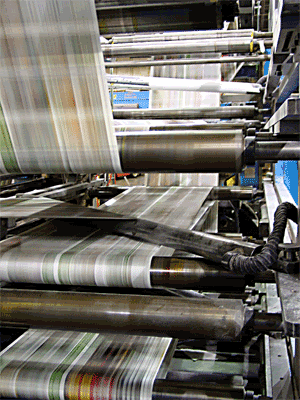
The dilemma facing creators of collaborative works, trying to find a way to generate a stream of revenue to pay all of their collaborators, has been described by Clay Shirkey in
Newspapers and Thinking the Unthinkable (whom I referred to in
What Can Newspaper Reporting learn from Yuricon?, but I did not quote this section):
Back in 1993, the Knight-Ridder newspaper chain began investigating piracy of Dave Barry’s popular column, which was published by the Miami Herald and syndicated widely. In the course of tracking down the sources of unlicensed distribution, they found many things, including the copying of his column to alt.fan.dave_barry on usenet; a 2000-person strong mailing list also reading pirated versions; and a teenager in the Midwest who was doing some of the copying himself, because he loved Barry’s work so much he wanted everybody to be able to read it.
One of the people I was hanging around with online back then was Gordy Thompson, who managed internet services at the New York Times. I remember Thompson saying something to the effect of "When a 14 year old kid can blow up your business in his spare time, not because he hates you but because he loves you, then you got a problem." I think about that conversation a lot these days.
And of course, this precise dilemma is faced quite widely: this is precisely the challenge that the creators of Japanese anime are facing: what do you do when 14 year olds can blow your business model out of the model in their spare time? And motivated by a love of your work?
I have
speculated on how to generate the finds to producer creative works based on small-sum crowd-financing by fans of the work. But for the creative fields that are facing financial stress, there is also the question of how to keep putting food on the tables of the creators while waiting for the future support systems to become established.

Anime is clearly an example of a creative field facing financial distress in the New Information Economy, and in the US market in particular. As I noted in the streaming anime site discussion that prompted
Teaspoon Model:
The Synch-Point R1 division of Broccoli shut down in 2005. The Geneon USA division was shut down in December 3, 2007. Central Park Media filed for Chapter 7 bankruptcy liquidation in April of 2009. Last month, ADV finished the re-organization it was forced into by threat of insolvency, re-organizing as AEsir/Sentai and spinning off its production arm.
That leaves Viz Media, Bandai and Funimation as the substantial surviving dubbing houses, with AnimEigo, Manga, Media Blasters, and Nozomi all adopting lower overhead niche marketing distribution strategies focused on sub-only thinpack boxset distribution
The Rise of the Bootleg Streamers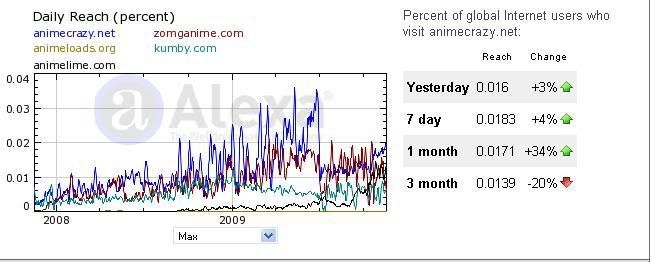
The chart on the right is the
Alexa "Reach" tracking of some of the current top site in the "AnimeToplist.com" site that allows bootleg video streaming sites to list themselves and viewers to vote for their preferred sites (this is done using the comparison feature at Alexa, so only the top-ranked site shows up in the above link).
Where the reach of a site is very "spiky", this shows that a lot of the viewers are following a particular favored show, and so the sites that can link to a streaming copy of the latest episode - which includes, of course, uploading the copy onto free streaming sites themselves - gets a surge in traffic as the viewer tune in. Of course, they get pageviews - the heavy lifting of streaming the video is done by the free streaming hosts, like MySpaceCDN.
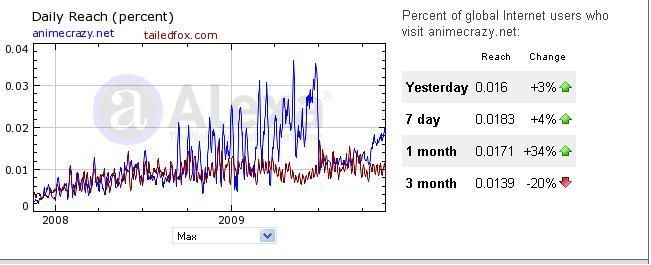
In that particular popular bootleg site there is that notable dip that hit in the middle of this year. It may be that the site generated enough traffic to attract the attention of a copyright holder, with a sweep through one or more popular series leading the viewers to head elsewhere. That suspicion is strengthened when it is compared to one of the more popular single-series sites, that focused on "Naruto Shippuden", which receives an up-tick in reach at the same time.
But what can be done? If one site is the target of a sweep, social media networks will quickly spread word of what other sites to go to, for whatever shows have been disrupted. And if a site is prominent enough to be the target of the sweep, some of its viewers have become community members, and they will respond by working to upload replacements.
And there will always be replacements available. Bootleg anime downloads are available via torrent download, where the people downloading are also, as part of the process, uploading for others, so that there is no central storage site for a copyright or other rights holder to target. Any given rights holder only has incentive to target their own works, so while some popular series may be down, there will be others that are still available, maintaining the community.
If in the extreme, a site collapses under determined attack, it will just be recreated as one or more new sites - since the sites
only link to the works, and do not stream the works themselves, they can survive on very slender revenue streams.
The Evolution of Crunchyroll
There was a different streaming site model. The site "Crunchyroll", the "Youtube of Anime", is a site that did its own streaming. However, this was not without its challenges, as found in forum postings on various decisions made in the course of its evolution. This from
late in 2006:
Posted Dec 28 2006, edited Jan 22 2007
A lot has happened since the 23rd of December. I will leave out the little details and just focus on one thing. Shinji announced that we are now no longer able to upload or watch licensed material. So all videos that are licensed in the United States either have been removed or will be.
What had happened is as follows. Costs for running the site were rising quickly. This month there was 4 times as much traffic as compared to the previous month, according to alexa.com (as you can see in the link under this paragraph). Shinji estimated this month's bill to be at around $9,000. He later stated that he had somehow got enough money together to pay this off. So there are two reason for why all licensed material has been removed. 1, with less videos, there will be less traffic to the site and 2, he wont have to worry about the site being taken down by some company.
Early in 2008, thanks to strong donation revenues from supporting members, Crunchyroll was able to
take down the web-ads:
after a long time of trying to combat crappy advertisements, i've decided to just take them down for now. there were some issues with the ads not always being family-friendly, or some shady ads that redirected people -_-...
...
crunchyroll originally started as a site for fun, it was a pure site that simply wanted everyone to experience the culture and joy that is asian media, but things are always more complicated than that -_-. so this is one of my attempts to make go back to crunchyroll roots and be purely about the user experience =D i want crunchyroll to be the best awesomest site on the internet ever, so it has to look good too, right? ;P
please please PLEASE thank the all crunchyroll star supporters for making this possible!!! without them, i wouldnt be able to do this. donations still aren't able to cover all of crunchyroll's costs, so i'll still continue finding ways to keep the site running~ but they do help a lot =D for sure i can keep ads off for 2 weeks, maybe longer..
please help out by donating here: http://www.crunchyroll.com/donate
...
Also in 2008, Crunchyroll was successful in negotiating for the
producers of work to upload directly to the site:
Hi everyone,
I've been working hard with the great folks at ADVFilms to bring you guys a really cool Anime! starting today, CR is going to start showing episodes of the series Welcome to the N.H.K. right here for free for everyone in the U.S./Canada/U.K. (we'll be putting up 2 more episodes every week!) I think anyone who's a bit Otaku like me will find it really funny ^_^
Click to watch episode 1 and episode 2!
Also, ADV is running a special promotion to purchase the DVDs at half off. So please buy it to show your support!
Finally came the big announcement that Crunchyroll was changing from streaming videos uploaded by fans to
videos uploaded by the producers of the work:
I'm working with TV TOKYO to bring you the best anime titles immediately after broadcast! Starting January 8th, we'll have the newest eps of Naruto Shippuden, Shugo Chara, Skip Beat!, and many other titles on CR with english subs for ppl everywhere possible (with some exceptions like Japan).
We're now working with so many great partners like Gonzo, Toei, ADV, Media Blasters, Directions, Udon, Organic, etc...and with their help, we've been able to bring some of the coolest Asian content to you guys. We are also working with even more partners in Japan to get permission to show all the content on the site (which means you can keep enjoying it!) Now with TV TOKYO, we're going to take CR to the next level--they're the largest anime TV station in Japan, they produced Bleach, Cowboy Bebop and premiered Eva (my fav anime of all time~!!)
This isn't any normal announcement, but the beginning of something awesome for Asian entertainment! CR has been growing so much that now so many companies from Japan, Korea, and everywhere are noticing and wanting to work closely with us. We'll be getting content straight from the source, so the quality of everything will be much better, and immediately available from our partners (so we don't need to wait for user uploads!) Plus by watching on CR, we can help support the anime producers so they keep making more great content. All of us at CR have been working really hard to make it happen! I know ppl have questions, and I don't have all the details yet cause we're working them out, but check back for updates!
...
As the announcement notes, there were more details to follow. The biggest detail was the primary release model, with paying subscribers ("premium members", at around $7/month) having access to most Crunchyroll series an hour after Japanese broadcast, and then most series becoming available for ad-supported free streaming a week later.
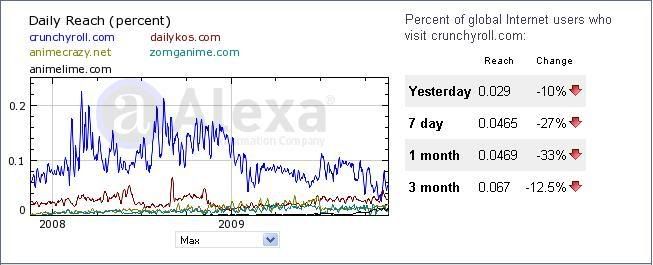
So now I turn to Alexa for Crunchyroll. For context, I give DailyKos (the red plot, ironically) as well as three of the bootleg anime streaming sites. In 2008, Crunchyroll is the dominant anime streaming site - even though by that time, they have an ongoing site policy to take down any anime that was licensed for distribution in the US, while most rival bootleg streaming sites are leech sites that link to free video streaming hosts.
With the new model, much long-time content - including unlicensed bootlegs of shows never licensed for US release - was taken down, with all material to be uploaded by the rights holder and distributed under the terms specified by the rights holder. As well, many non-US members were faced with the headache of a patchwork quilt of national distribution rights: with different national laws and different preferences of different broadcasters and DVD distributers, there is little rhyme or reason as to which series a non-US viewer will be able to view on Crunchyroll.
The impact of that on Crunchyroll's reach is dramatic - but of course, had already been funded primarily by a smaller number of donating members, now formalized as premium members.
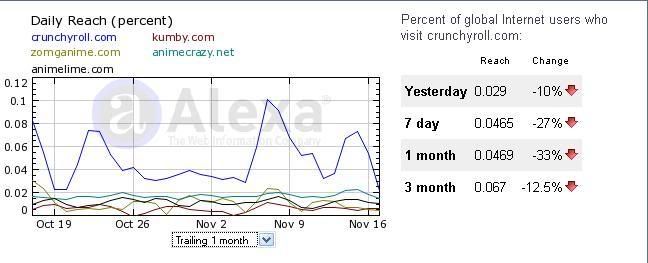
Here is a look at the same information, focusing on the last month.
Now, the uniform picture of doom and gloom that would be gleaned from a quick glance at the red trend arrows is exaggerated by the anime release schedule, since the snapshot date happens to be in a lull in the weekly schedule. However, stepping back to the last traffic peak, the last weekly peek for Crunchyroll was a reach of around 0.075%. The four bloodsucker leech sites shown appear to be at roughly 0.02%, 0.015%, and two at 0.005% - a total of 0.045%.
And there are a host of others - another three or four at 0.005% and ten or twenty at 0.001% and where Crunchyroll clearly dominated the streaming sites in 2008, the bloodsucker leeches may now be gaining ground.
The Source of the CompetitionHowever, the reason these bloodsucker leech sites proliferate is because they directly require such a small share of the total resources that they rely upon. The major part of the bandwidth resource is not paid by their server - its paid by the free streaming sites.
Data-mining the sites for links is what revealed the heavy reliance of one site on MySpaceCDN (this was the site that gained the attention when its site administer whined about FUNimation, one of the most aggressive rights holders in copyright enforcement, sending a legal notice to its server). Extending the same data-mining tools - "wget" and "sed", plus sed and batch scripts - to more sites showed that there are three main sites that these bloodsuckers rely upon for their free streaming - some relying primarily on one, some relying heavily on two or all three:
There are additional sites that are important supplementary sources, but these are the three primary sites.

Which means that the "Teaspoon Model" that I originally proposed simpler to get launched than I had at first imagined:
And swatting down that cloud of bloodsucking flies would seem to be impossible but still, I wonder. After all, as I noticed when I started looking into this - being an aggregator for material available elsewhere in the Internet means pointing to where to find the material. And the reason they attract memberships (they are presently trying to raise $100 for their new and improved site design) is because its time consuming to wander around the back alleys and dank corners of the Internet trying to find places where the bootleg material is available.
So this is what I was thinking. Perhaps a small, struggling company that wanted to reduce the density of the cloud of bloodsucking flies draining the work of the artists who create this material of market value could gain leverage not by trying to find the Super-Teaspoon - but by recruiting a supporting group, each armed with ordinary teaspoons.
There'd have to be at least one person at the company actually sending out the letters to the sites streaming the bootlegs - but they would be far more effective if backed up by ten or twenty people contributing a couple of hours a week tracking down where the material is located. Indeed, the "white hats" could drop in info on where to get the material legally while at the bootleg bloodsucker streaming sites, including the proliferating opportunities for legal free streams.
At the outset, the Teaspoon Model could focus on effective strategies for bootlegs uploaded to these three hosts. It would then be up to the bootleg streaming sites to come up with countering strategies - but as their free streams keep disappearing, the alternative of the licensed free streams, with no problem of shows vanishing and having to be replaced, there is at least the prospect that some will just give up trying to stream in direct competition with licensed free streams, and instead redirect US viewers to the licensed site for material that is legally available.
Celebrating Small Victories for the Teaspoon Model
That leaves the pragmatic question of how hard is it to pursue this model?
Note that what I have been doing in exploring is not the full-fledged Teaspoon Model, where a rights holder works with a community - though in a sense, the move of Crunchyroll from illegal streaming of unlicensed shows to uploading of shows by the rights holder was a move in the same spirit.
Rather, as I have been pursuing my research on this market, I have been emailing the lists of links to various stakeholders, including both rights holders of various sorts and the free streaming hosts.
Megavideo Megavideo is the most straightforward case. Whenever they receive a cc: of a long list of bootleg anime on their servers, those animes disappear. The same was true of the big set of links I gleaned of series competing directly against licensed free streams from Crunchyroll. Of 1,700 links (some of them duplicates across the two sites), over 99% have been taken down.
Veoh Veoh has been more hit and miss. After taking down almost all links from an earlier list they received, their first receipt of the latest collection of links seemed to generate no response. However, of the two sites I was examining, one had no Veoh links at all - but a large number of links hidden behind a php server. Further investigation showed that these were backdoor links to files that Veoh used to stream videos.
However, it may be that the anime site that so cleverly went through the backdoor for files at Veoh servers shot itself in the foot. After Veoh received those links, almost all of them went down. The Veoh embedded streaming player, of course, gives viewers a path to the Veoh site - and it seems that Veoh is not so keen on passively streaming files, hidden behind the bootleg anime sites streaming player. Between that and the final phase, reported in the next session, that is a total of 943 unique Veoh links taken down.
MySpaceCDN There was, however, no evident response from MySpaceCDN. On other other hand, when looking at the drop/retention rates of the Veoh files, I saw that some series were clearly receiving attention from another party. There were not enough of my links going down for it to be coming off of the lists I had distributed - but too many to be background turnover..
Looking at the
AnimeNewsNetwork, I saw that those were TV Tokyo shows. It is, of course, not surprising that I had a lot of TV Tokyo shows in my lists of links, since last week I focused on series competing head to head with Crunchyroll, and their deal with TV Tokyo was the foundation of their move to all-licensed streaming.
Still, I went looking, and found some TV Tokyo email addresses, and forwarded the links. And today, I checked my master list of MySpaceCDN and, finally, after nothing bus frustration on the MySpaceCDN front,
success. 523 MySpaceCDN series taken down.
So, while there is no indication that Rupert Murdoch's MySpaceCDN servers have abandoned its tacit complicity with the bootleg anime streaming sites: when faced with a demand from a rights holder, even NewsCorp must submit.
And even, as a research project, I put more work into this than an ordinary community supporter might do - on the other hand that was over 2,500 bootleg streams coming down as a result.
Looking Ahead to the Teaspoon ModelOne thing that has become clear is that the strategy of using the bootleg host streaming sites to find, organize, and present links to bootleg animes on the big free streaming sites
is much more efficient than wading through those big streaming sites themselves. Finding, organizing and presenting of the links is, after all, what the bootleg streaming sites are
doing.
Provided that the conduit to TV Tokyo remains open, it would only take an hour or two a week to collect new releases and a few hundred of links from back catalogs - and, of course, the links are readily collected with full series and episode information, as all the popular sites include that information in their html page title code. Another hour to vet that the links are live, and the list is ready for sending on.
Clearly, if the original rights holder cooperates, a small group of five to ten supporters of a licensed streaming site could hold a market space for a licensed streaming site to operate with only a modest contribution of time from each. The group would require one or two members with some skill in writing scripts for stream editing - which could be Perl, sed, awk, or even Forth. But other than that, all it would require is the access to the internet.
 What is the CEI? It is the "Cost Effectiveness Index", used to evaluate applications for capital improvements in transit. As described by Yonah Freemark at The Transport Politic:
What is the CEI? It is the "Cost Effectiveness Index", used to evaluate applications for capital improvements in transit. As described by Yonah Freemark at The Transport Politic: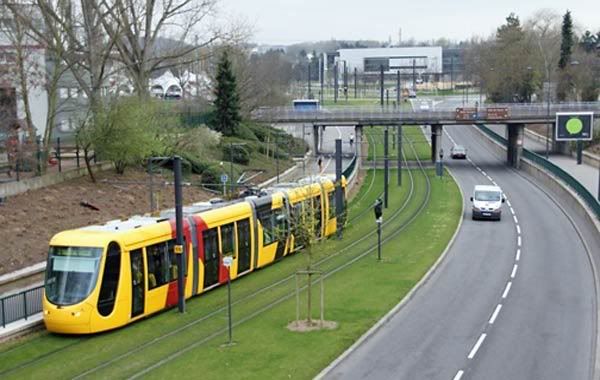 Its easy to so got lost in the details of the debate over the details of what is in the CEI that we lose sight of a more basic question: is any single index number going to be right for identifying all of the most worthwhile projects?
Its easy to so got lost in the details of the debate over the details of what is in the CEI that we lose sight of a more basic question: is any single index number going to be right for identifying all of the most worthwhile projects? The reason that some bureaucrat was told, "make up an index number" was an effort to provide a means for selecting projects that was not entirely based on political clout. But when we accept that no one number can be all things to all people, that does not mean we have to throw out the baby with the bathwater.
The reason that some bureaucrat was told, "make up an index number" was an effort to provide a means for selecting projects that was not entirely based on political clout. But when we accept that no one number can be all things to all people, that does not mean we have to throw out the baby with the bathwater.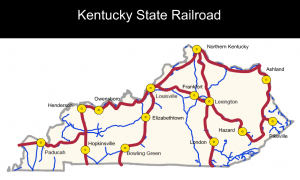 Doctor Dan Mongiardo, Kentucky's Lieutenant Governor, has announced that he is running for the Democratic nomination for the Kentucky Senate race, to take on whoever wins the Republican nomination to challenge for the seat that Senator Bunning (R-Big$$$) has announced he is giving up.
Doctor Dan Mongiardo, Kentucky's Lieutenant Governor, has announced that he is running for the Democratic nomination for the Kentucky Senate race, to take on whoever wins the Republican nomination to challenge for the seat that Senator Bunning (R-Big$$$) has announced he is giving up.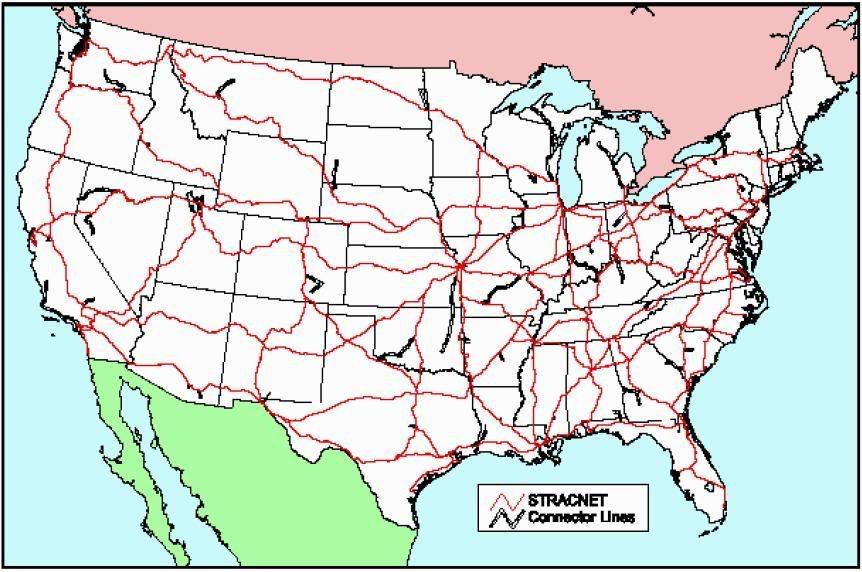 But if "transcontinental HSR" refers to electrifying one of the main east/west STRACNET corridors and upgrading it to allow 100mph single stack container freight - well, that is a vital national priority, and as a side-benefit that corridor would also effectively permit 110mph tilt-train passenger rail services. So under the definitions the DoT uses, that's a "transcontinental HSR".
But if "transcontinental HSR" refers to electrifying one of the main east/west STRACNET corridors and upgrading it to allow 100mph single stack container freight - well, that is a vital national priority, and as a side-benefit that corridor would also effectively permit 110mph tilt-train passenger rail services. So under the definitions the DoT uses, that's a "transcontinental HSR".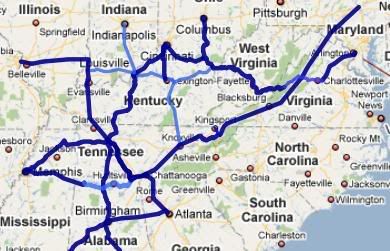 Of course, as previously discussed in the Appalachian Hub series on the Sunday Train, the Steel Interstate approach also supports Louisville / Nashville. And Dr. Dan proposes (as would I) a link from Lexington to Knoxville which would then connect through Chattanooga to either Atlanta or Birmingham and the existing proposed Gulf and Southeast HSR corridors.
Of course, as previously discussed in the Appalachian Hub series on the Sunday Train, the Steel Interstate approach also supports Louisville / Nashville. And Dr. Dan proposes (as would I) a link from Lexington to Knoxville which would then connect through Chattanooga to either Atlanta or Birmingham and the existing proposed Gulf and Southeast HSR corridors.
 The
The  Indeed, for Express HSR advocates, that fact alone is tremendous good news. Since the Emerging (110mph) Higher Speed Rail is time-competitive with driving, and the Regional (125mph) Higher Speed Rail is perceptibly faster than driving, operation of these systems will revolutionize common public perception of "ordinary" rail service. This will ensure that those with systems will want them expanded, while many states that presently lag in developing Higher Speed Rail plans will be facing pressure to get off the stick ... and that is a strongly favorable political environment for an HSRail development bank that can provide the Express (220mph) High Speed Rail systems the funding security they need.
Indeed, for Express HSR advocates, that fact alone is tremendous good news. Since the Emerging (110mph) Higher Speed Rail is time-competitive with driving, and the Regional (125mph) Higher Speed Rail is perceptibly faster than driving, operation of these systems will revolutionize common public perception of "ordinary" rail service. This will ensure that those with systems will want them expanded, while many states that presently lag in developing Higher Speed Rail plans will be facing pressure to get off the stick ... and that is a strongly favorable political environment for an HSRail development bank that can provide the Express (220mph) High Speed Rail systems the funding security they need.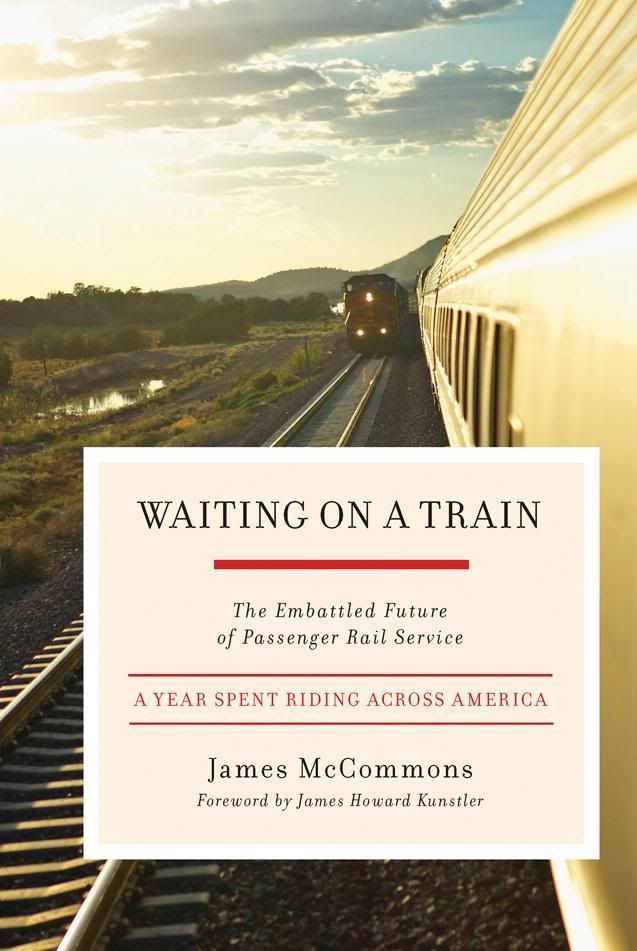 I've been reading James McCommon's
I've been reading James McCommon's  There are two really substantial competitive advantages to frequency - but both require more than a high frequency schedule alone to tap that potential.
There are two really substantial competitive advantages to frequency - but both require more than a high frequency schedule alone to tap that potential.
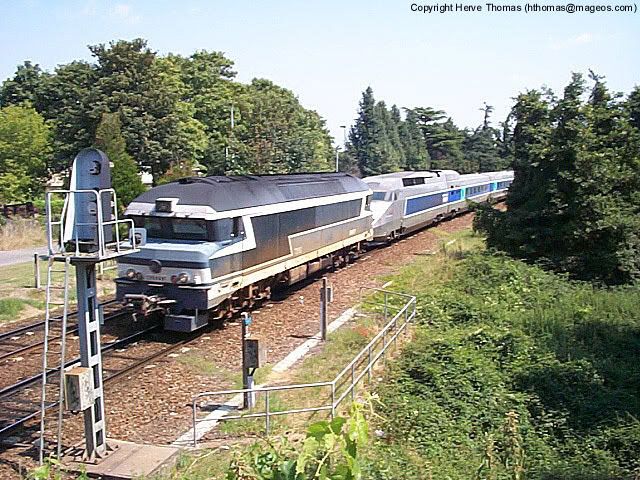


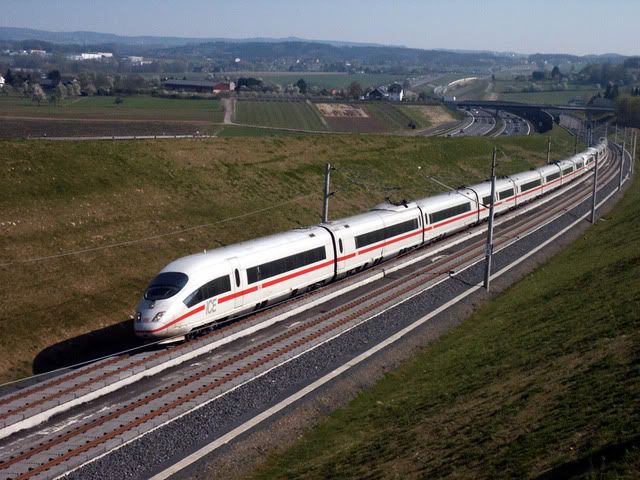


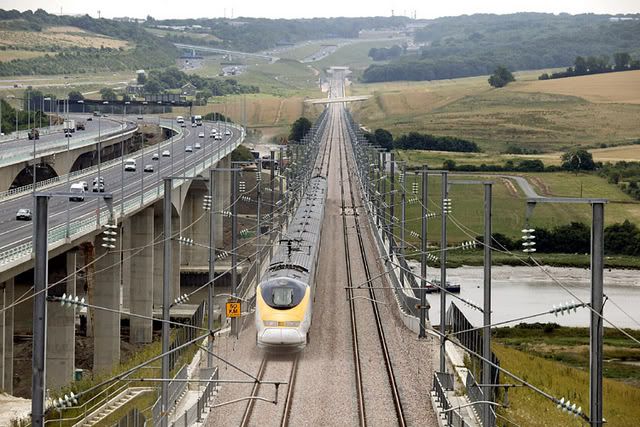
 About a month ago, I asked, "
About a month ago, I asked, " The dilemma facing creators of collaborative works, trying to find a way to generate a stream of revenue to pay all of their collaborators, has been described by Clay Shirkey in
The dilemma facing creators of collaborative works, trying to find a way to generate a stream of revenue to pay all of their collaborators, has been described by Clay Shirkey in  Anime is clearly an example of a creative field facing financial distress in the New Information Economy, and in the US market in particular. As I noted in the streaming anime site discussion that prompted
Anime is clearly an example of a creative field facing financial distress in the New Information Economy, and in the US market in particular. As I noted in the streaming anime site discussion that prompted  The chart on the right is the
The chart on the right is the  In that particular popular bootleg site there is that notable dip that hit in the middle of this year. It may be that the site generated enough traffic to attract the attention of a copyright holder, with a sweep through one or more popular series leading the viewers to head elsewhere. That suspicion is strengthened when it is compared to one of the more popular single-series sites, that focused on "Naruto Shippuden", which receives an up-tick in reach at the same time.
In that particular popular bootleg site there is that notable dip that hit in the middle of this year. It may be that the site generated enough traffic to attract the attention of a copyright holder, with a sweep through one or more popular series leading the viewers to head elsewhere. That suspicion is strengthened when it is compared to one of the more popular single-series sites, that focused on "Naruto Shippuden", which receives an up-tick in reach at the same time. There was a different streaming site model. The site "Crunchyroll", the "Youtube of Anime", is a site that did its own streaming. However, this was not without its challenges, as found in forum postings on various decisions made in the course of its evolution. This from
There was a different streaming site model. The site "Crunchyroll", the "Youtube of Anime", is a site that did its own streaming. However, this was not without its challenges, as found in forum postings on various decisions made in the course of its evolution. This from  So now I turn to Alexa for Crunchyroll. For context, I give DailyKos (the red plot, ironically) as well as three of the bootleg anime streaming sites. In 2008, Crunchyroll is the dominant anime streaming site - even though by that time, they have an ongoing site policy to take down any anime that was licensed for distribution in the US, while most rival bootleg streaming sites are leech sites that link to free video streaming hosts.
So now I turn to Alexa for Crunchyroll. For context, I give DailyKos (the red plot, ironically) as well as three of the bootleg anime streaming sites. In 2008, Crunchyroll is the dominant anime streaming site - even though by that time, they have an ongoing site policy to take down any anime that was licensed for distribution in the US, while most rival bootleg streaming sites are leech sites that link to free video streaming hosts. Here is a look at the same information, focusing on the last month.
Here is a look at the same information, focusing on the last month. Which means that the "Teaspoon Model" that I originally proposed simpler to get launched than I had at first imagined:
Which means that the "Teaspoon Model" that I originally proposed simpler to get launched than I had at first imagined: That leaves the pragmatic question of how hard is it to pursue this model?
That leaves the pragmatic question of how hard is it to pursue this model?
